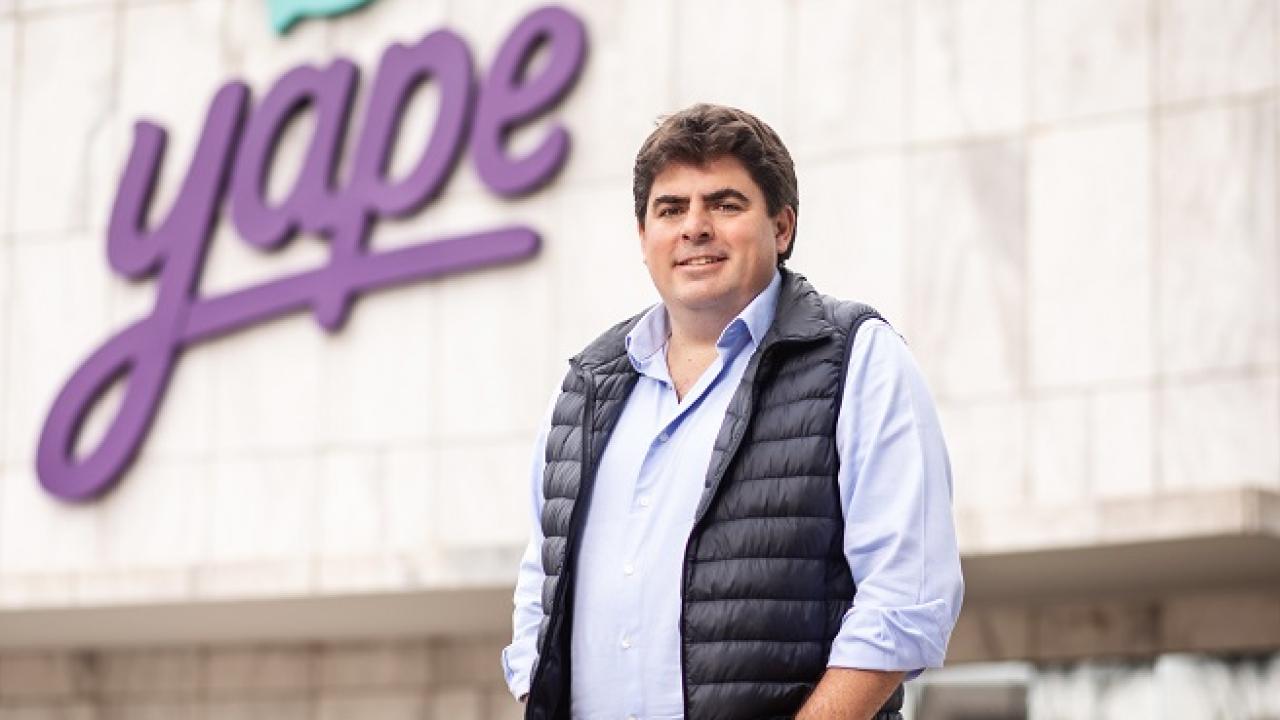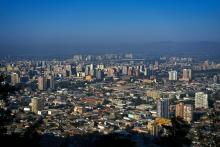
After four years of leadership in Peru, Yape, the digital wallet of the Credicorp financial holding, faces the challenge of consolidating its first operation abroad: Bolivia, which added 1.5 million users in just over six months. This is part of a growth path that includes the possibility of becoming a neobank.
Now converted into a super app, Yape, the digital wallet of Peruvian financial holding Credicorp, currently has more than 16.5 million users. Of that total, 15 million belong to Yape's operations in Peru and 1.5 million are users in Bolivia, a market in which it expanded in August 2023.
Although in the short term there are no plans for a new regional landing, Yape now faces the challenge of consolidating what has been built in both countries. While in Peru it will seek to consolidate its new functionalities, in Bolivia it will try to reach a level of use similar to that of the Peruvian market, especially for payments.
AméricaEconomía spoke with Raimundo Morales, CEO of Yape, about the main business lines that will lead this consolidation phase, which also involves ambitious goals and the possibility of becoming a neobank.
- A little more than six months ago, Yape entered Bolivia. What is the balance of this operation?
We formally entered in the middle of last year. What we did was evolve a wallet that we had there, which was called Soli and had an initial customer base. Now, we have changed it to Yape. Today, we have 1.5 million 'yaperos' in Bolivia and we are very happy with the result. We grow at a rate of almost 100,000 new 'yaperos' per month and the big issue is that about 35% or 40% of the 'yaperos' are active; they transact with us every month. We are really very happy to bring our experience from Peru to Yape Bolivia.
- With a view to expanding to other markets in the region, what lessons have you learned so far from operating Yape outside of Peru?
What Bolivia is showing us is that there is a real need for financial inclusion, for a digital payments solution, as there was in Peru at the time, when we started. If we come in with a solution that is highly contextualized, easy to use, and simplifies the way payments are made, we can start to make significant changes in terms of people's use of cash and wallets.
- Will Yape reach another new market in 2024?
For now we do not have a plan to expand Yape to another country, our focus is Peru and Bolivia. We want to finish consolidating the new functionalities in Peru and, in Bolivia, support and achieve a level of use like the one we have in Peru. From there, we'll see.
- How extensive is Yape's service offering in Bolivia?
It is less extensive than that of Peru due to the stage that the product is experiencing. We want to focus basically on payments --receiving payments, making payments, paying for services and recharging the phone, which are the main use cases. We want more people to use it for payments. For example, there are people who use QR payment more than contact payment. There is an issue of interoperability, because all digital payments are born there and are interoperable with QR. We were born in a slightly different way than in Peru, but the principle is to bring the payment proposal. Once we get the 'yaperos' to use it more and more and generate traction and scale, we will offer new products, as we have been doing in Peru.
- In Peru, Yape is already considered a super app. What other services or functionalities can be provided?
We're at a stage where we've just launched 10 features in the last six or eight months. More than launching many functionalities, what we want now is for all 'yaperos' to use Yape to solve more things on a daily basis. The focus is that after they 'yape' and buy with Yape, they can pay at a POS, recharge their cell phone, pay an electricity, water or telephone bill and that they can try Yape Créditos. We have placed more than one and a half million credits since we launched Yape Créditos a year and a half ago, but there is still plenty of room to grow. Now, we have launched the Yape Store. The goal is to get more people to use the features that are already there.
- How is Yape Tienda progressing? What has been the path to becoming a popular marketplace among Peruvians?
We launched it at the end of last year. We are testing the functionalities, but we already have indications that there is a need or a space where we can play. In the last month we have had days in which we have placed 5,000 orders. This is in line with what the main e-commerce companies in the country do. It's not that we do that every day, but we began to become a relevant player in the market. And, as it is our beginning, we have a lot of expectations. We are finishing learning, consolidating, understanding the challenges and the logistical issue well.
- There is a lot of talk about Credicorp's plans to turn Yape into a neobank. How close does this possibility currently seem?
If you think about the functions of a bank, which are to allow you to have an account, make payments or give a loan, Yape is on the way to that. The neobank is included in this great definition of superapp and our vision is to continue in that direction. We have three main lines of business. The first two summarize the concept of the neobank with the payment and account function, where you can make all types of payments, receive remittances, and carry out exchange rate operations. We have already consolidated this.
The second front is the loan side, in which we are working to increase our product offering and reach more 'yaperos'. We have a very aggressive ambition. In the long term, we want to lend [money] to five million Peruvians. That means doubling the number of Peruvians who work with the financial system, in terms of loans. We have lent to approximately 400,000 people, but we are just getting started and we are going in that direction. We are really excited about the progress, but we want to grow this exponentially much more.
- At some point, in a more mature stage, is it possible that Yape will split or separate from BCP, as digital wallets have done in other countries in the region?
What we have talked about is that we could do it if it made sense. At the moment, we do not see it as a priority. We work very well hand in hand with the BCP and it helps us precisely, for example, on the loan front.
BCP has an entire risk team that has helped understand and make viable offers for more than two million people. We would not have achieved this so quickly if we had not been hand in hand with the BCP. Today, our focus is to work hand in hand and complement the offer. We fit and complement a lot with the offers and products that the bank has and we do not see a need to separate ourselves completely. What we do want is to bring new things each time and expand that value proposition. Until a few years ago, the financial system was oriented to the formal sector of the economy and, in the last two years, we have been entering the rest of the population with financial inclusion. Between BCP and Yape we have included more than four million Peruvians who did not work with the financial system. We want to continue that not only from the transactional side, but also from the lending side. In parallel, we also want to work on what we call digital inclusion, on how to bring the logic of Yape Tienda or Yape Promos to the average Peruvian consumer. Or the benefits of digital commerce, of being able to buy online, of having access to offers.
- How many users does Yape have in Peru?
We have 15 million 'yaperos', of which 11.5 million are active 'yaperos'. This network of 15 million has been very important, because our own 'yaperos' are helping us bring in new users. We are investing a lot to be present in the most remote areas, so that Yape is available to all Peruvians.
- Speaking of the general market, what challenges still exist to expand and consolidate digital wallets? Progress has already been made on the issue of interoperability. But what else can you do?
Peru has made a lot of progress. If one adds the users of Yape and Plin, we cover the vast majority of the adult population of Peru. This is a radical change, which has been made in the last four years. They began to focus on this since 2017 and have achieved great accessibility. Interoperability was a great work led by the Central Reserve Bank, but coordinated with the private sector. We have managed to make the solutions interoperate and that makes the ecosystem grow. Not a year has passed [since the interoperability of Yape and Plin] and more than two million interoperable payments are already made per day. It is a system that works very well. It is one of the experiences, at least on our side, that have the highest customer satisfaction results. It is a path that we have to continue so that more players continue to connect and for the ecosystem to grow.
Because, at the end of the day, what we always say is that the enemy here is cash, not competition. As the ecosystem expands, we can provide benefits in financial inclusion to more Peruvians.










